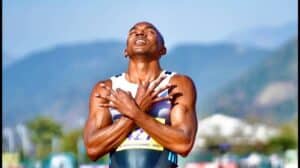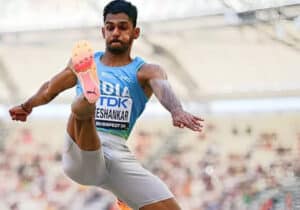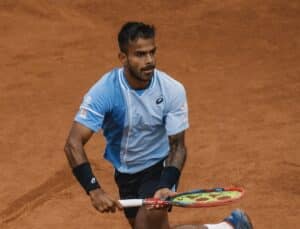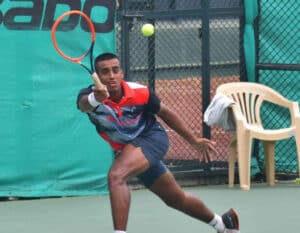Between mid-2023 and mid-2025, Animesh Kujur’s steady rise shows what targeted coaching, international exposure, and clear goals can do for an athlete from a non-traditional sporting background.
In this period, he moved from national promise to becoming India’s fastest man breaking national records in both the 100m and 200m, and contributing to a relay record that points to India’s growing depth in sprints.
The shift wasn’t about one big race but about consistently seeking out faster competition, adapting his training, and focusing on the process rather than just medals. In many ways, Kujur’s journey offers a case study for other Indian athletes on bridging the gap between national success and world-level competitiveness.
Early Context and Turning Points
Born on June 2, 2003, in Ghuitangar, Jashpur district of Chhattisgarh, Kujur didn’t start with the kind of support or infrastructure athletes from major cities often have. He first played football, where his speed stood out, and it was only after a local coach saw him at an Under-18 meet in 2019 that sprinting became an option.
His family supported the move, although his mother worried about injuries and uncertainty in sports. A major moment came in 2022 at the National Open U-23 Championships, where after winning the 200m, Kujur approached British coach Martin Owens from the Reliance Foundation HPC in Odisha. Owens, along with performance coach Chris Woolley, started working with Kujur, focusing on technique, movement, and strength.
Domestic Breakthrough (2023)
October 2023 at the National Open Athletics Championships in Bengaluru was when Kujur first caught wider attention, winning the 200m in 20.74 seconds and setting a meet record.
At the National Games (reported for late 2023 and early 2024), he won gold in three events: 100m (10.28s), 200m (20.58s), and the 4x100m relay (39.47s). Each was a new Games record. These performances showed he wasn’t just a 200m runner, but had range across sprints and relays.
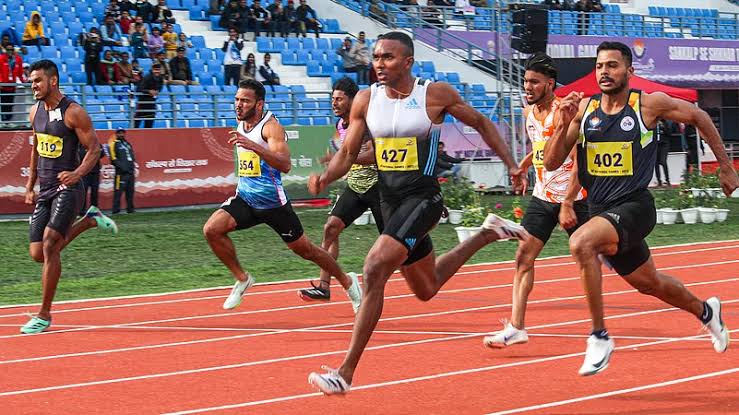
Breaking the National Record and Competing Abroad (2024)
In April 2024, at the Federation Cup in Kochi, Kujur ran the 200m in 20.40s, breaking Amlan Borgohain’s previous national record of 20.52s. This happened just days after he suffered heatstroke in Chennai, where he still ran 20.63s to win the 200m.
Later in December, at the Inter-University Athletics Championships, he clocked 20.57s though this mark wasn’t officially recognised due to meet sanctioning.
More important than timings alone, Kujur started competing in Europe. Racing against faster sprinters gave him a clearer sense of the difference between national and international standards.
2025: National Records, Asian Podium, and Diamond League Debut
2025 saw a run of strong performances rather than isolated peaks.
- Asian Athletics Championships (May 2025, South Korea): Kujur clocked 20.32s in the 200m, breaking his own national record and finishing third only the second Indian male ever to medal in this event at the Asian level.
- AtleticaGeneve (June 2025): He ran 20.27s, the fastest ever by an Indian, though wind-assisted so not officially a record. It showed what’s technically possible.
- Dromia International Sprint & Relays Meeting (July 5, 2025): Kujur clocked 10.18s in the 100m, breaking Gurindervir Singh’s national record (10.20s). This made him the first Indian to go below 10.20s, breaking what had long seemed a psychological barrier.
- Relay milestone: In April 2025, India’s 4x100m team (including Kujur, Gurindervir Singh, Amlan Borgohain, and Manikanta Hoblidhar) set a new national record of 38.69s at the National Relay Carnival.
- Diamond League debut (Monaco, July 11, 2025): Kujur ran the U23 200m in 20.55s, finishing fourth. It wasn’t his fastest race, but competing at this level where usually only top-8 globally ranked sprinters compete was significant.
In a conversation after Monaco, Kujur shared that racing with athletes like Gout Gout and seeing world stars like Noah Lyles warmed up close by was a learning experience. The crowd, the scale, and the environment added a layer he hadn’t experienced before.
Numbers in Perspective
100m:
- June 2024: 10.27s (personal best)
- July 2025: 10.18s (national record)
200m:
- October 2023: 20.74s
- April 2024: 20.40s (national record)
- May 2025: 20.32s (national record)
- June 2025: 20.27s (wind-assisted)
Relay:
- April 2025: 38.69s (national record)
Between October 2023 and May 2025, his official 200m best improved by 0.42s. In the 100m, he shaved off 0.09s over about a year significant margins at elite level.
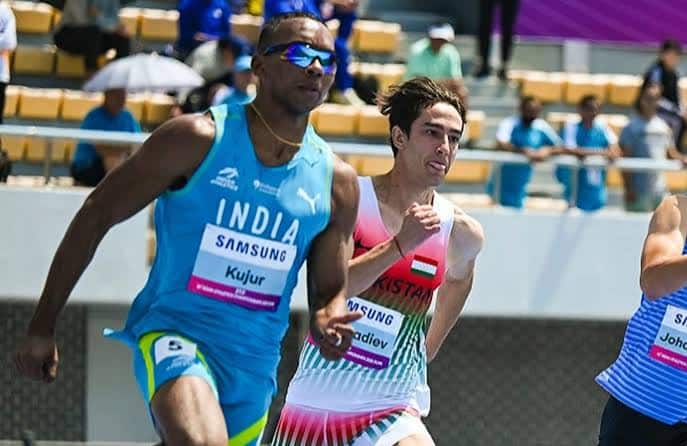
What Drove the Improvement
Competing Abroad
Kujur often said racing faster athletes pushed him beyond domestic limits. In India, very few sprinters run sub-10.3 or sub-20.6, so racing in Europe was not just exposure but essential to break barriers.
Training Focus
Martin Owens and Chris Woolley worked on technical aspects: block starts, posture, and lower body strength. Woolley, coming from bobsleigh, focused on explosive starts. Kujur felt the difference quickly, saying a 10-day training block showed measurable gains.
Support from Odisha Govt
Empowering athletes for global success, the Odisha Government supports High Performance Centre athletes in gaining international exposure and competing with the world’s best.
In the recent conversation, coach Owens noted that while the start had improved, there’s still room for small gains. He also emphasized that the long season (with meets in Asia, Europe, and relays) slightly affected overall fitness, something they’re working on.
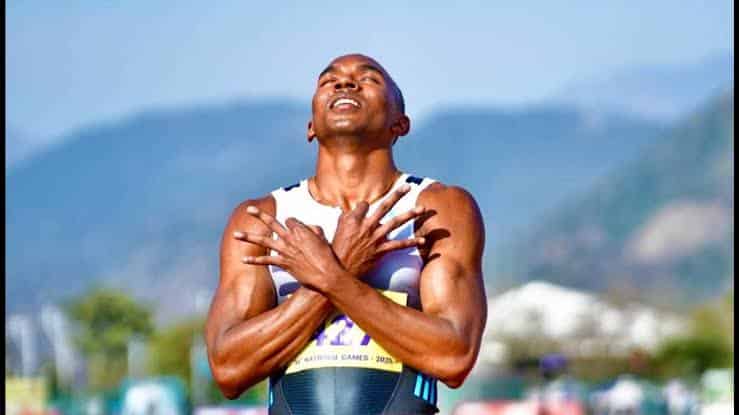
Observing Elite Athletes
At European meets and the Diamond League, Kujur observed not just race-day warm-ups but the routines, lifestyle, and mindset of global sprinters. His roommate at one meet, a South African athlete, shared daily habits that Kujur said he’d adopt.
Challenges and How They Adapted
- Background: Growing up far from major facilities meant technical gaps to catch up on.
- Heatstroke and fatigue: Like in Chennai, where despite physical struggle, he ran close to his best.
- Limited domestic competition: Forced him to look abroad for faster rivals.
- Tiring schedule: Coach Owens admitted the travel and frequent races left less time for base training.
Despite this, both coach and athlete stayed focused on process over medals.
Beyond Records: The Broader Impact
- Breaking mental barriers: His sub-10.2s 100m run showed Indian sprinters can challenge historic limits.
- Relay promise: The national record in relay underlines a realistic medal chance at Asian level or better.
- Inspiration: For young sprinters from non-traditional regions, Kujur’s journey shows a pathway that works.
What’s Next: Goals and Plans
After Monaco, Kujur’s next targets are:
- Meeting the 20.16s qualifying mark for the World Championships in the 200m.
- Consistently running sub-10.2s in the 100m, moving toward sub-10.
- Strengthening the relay for upcoming meets.
Coach Owens believes breaking 10s and 20s is realistic but will take patience. They also plan base training in Germany and further European meets.
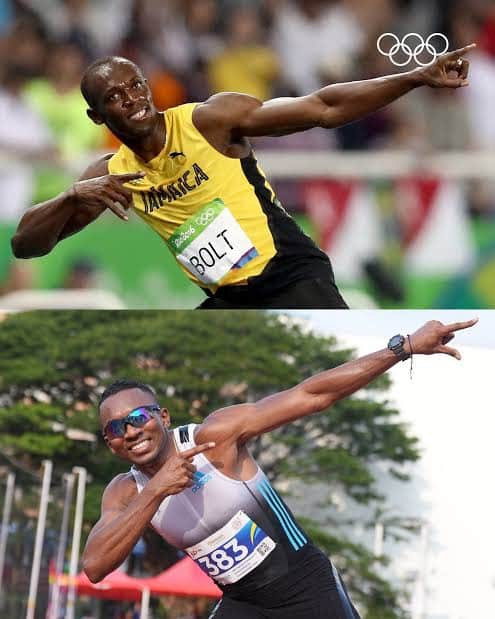
Technical Adjustments and Insights
In conversation, Kujur explained differences between 100m and 200m: the challenge of running curves vs straights, and the need for different training tools. Coach Owens shared how equipment like the 1080 Sprint machine helps with acceleration on straights but needs adaptation for curves.
They also analyzed his splits, finding small sections to improve especially at the start and maintaining speed after 130m in the 200m.
Mindset and Motivation
Coach Owens described Kujur as polite, driven, and motivated by being better rather than by medals. Kujur himself said seeing world-level sprinters helped him realize success isn’t just about race day it’s about lifestyle choices and consistency.
He credited these experiences with changing how he thinks about preparation, rest, and even off-track habits.
Broader Lessons from the Last Two Years
- Start matters: Even small gains off the blocks translate into better overall times.
- International exposure isn’t optional: Racing only at home can cap potential.
- Process focus: Rather than chasing single big performances, building consistency brings breakthroughs.
- Team focus: Strong relays can provide earlier international medals, even before individual podiums.
More Than Just India’s Fastest Man
From 2023 to 2025, Animesh Kujur’s journey wasn’t built on sudden success but on steady steps: approaching a coach, competing abroad, refining starts, and observing world champions. His best times 10.18s in 100m and 20.32s in 200m (plus the wind-assisted 20.27s) didn’t come overnight but through planning, travel, and adaptation.
He’s now aiming for world standards: sub-10 in 100m, sub-20 in 200m, and a place in global finals. Along the way, his story shows Indian athletes especially from underrepresented regions what’s possible with coaching, competition, and belief.
As Indian athletics sets its sights on 2026 and 2028, Kujur’s last two years offer a practical roadmap, built not just on talent but on data, detail, and patience.
His story isn’t finished but it’s already reshaped what Indian sprinting can aim for.
How useful was this post?
Click on a star to rate it!
Average rating 5 / 5. Vote count: 2
No votes so far! Be the first to rate this post.

